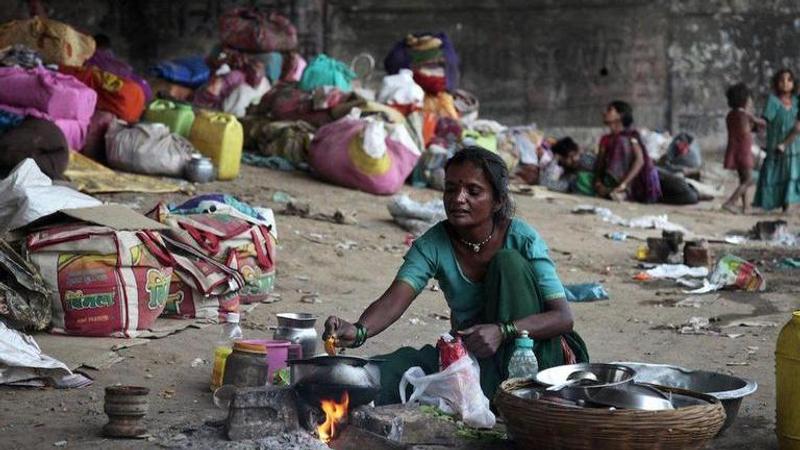Published 17:07 IST, July 17th 2020
India saw the most people moving out of multidimensional poverty between 2005-15: UN
India saw the most people moving out of multidimensional poverty – some 270 million people between 2005/06 and 2015/16, a recently released UN report said

India saw the most people moving out of multidimensional poverty – some 270 million people between 2005/06 and 2015/16, a recently released United Nations report has said.
The United Nations Development Programme on Thursday came out with the 2020 Global Multidimensional Poverty Index (MPI) which said that before the COVID-19 pandemic hit, progress was being made in tackling multidimensional poverty. MPI is a measure that looks beyond income to include access to safe water, education, electricity, food, and six other indicators to gauge poverty. The data, released by the UNDP and the Oxford Poverty and Human Development Initiative (OPHI), shows that 65 out of 75 countries studied significantly reduced their multidimensional poverty levels between 2000 and 2019.
Among the 1.3 billion people still living in multidimensional poverty today, more than 80% are deprived in at least five of the ten indicators used to measure health, education, and living standards in the global MPI. The data also reveals that the burden of multidimensional poverty disproportionately falls on children. Half of the 1.3 billion poor have not yet turned 18, while 107 million are 60 or older.
Four countries halved their MPI value. India (2005/2006–2015/2016) did so nationally and among children and had the biggest reduction in the number of multidimensionally poor people (273 million). Ten countries, including China, came close to halving their MPI value.
The percentage of children receiving three doses of diphtheria, tetanus, and pertussis (DTP3) vaccine is often used as an indicator of how well countries are providing routine immunization services. Ten countries account for 60% of unvaccinated children, and 40% of children unvaccinated for DTP3 live in just four countries: Nigeria, India, Pakistan, and Indonesia.
Populous developing countries can contribute considerably to the number of unvaccinated children despite achieving high immunization coverage, as evidenced by India’s 2.6 million under-vaccinated children and 89% coverage rate. Efforts to raise global immunization levels will require a strong focus on the countries where the highest numbers of unvaccinated children live—without neglecting countries where children are most likely to miss out on immunization, the report says.
COVID can impact gains made on poverty
The UNDP reports says that while data are not yet available to measure the rise of global poverty after the Coronavirus pandemic, simulations based on different scenarios suggest that, if unaddressed, progress across 70 developing countries could be set back 3–10 years.
“COVID-19 is having a profound impact on the development landscape. But this data – from before the pandemic – is a message of hope. Past success stories on how to tackle the many ways people experience poverty in their daily lives, can show how to build back better and improve the lives of millions,” said Sabina Alkire, Director of OPHI at the University of Oxford.
Meanwhile, Pedro Conçeicão, Director of the Human Development Report Office at UNDP, said COVID-19 is the latest crisis to hit the globe, and climate change all but guarantees more will follow soon. "Each will affect the poor in multiple ways. More than ever, we need to work on tackling poverty – and vulnerability to poverty - in all its forms."
(AP Photo)
Updated 17:07 IST, July 17th 2020




